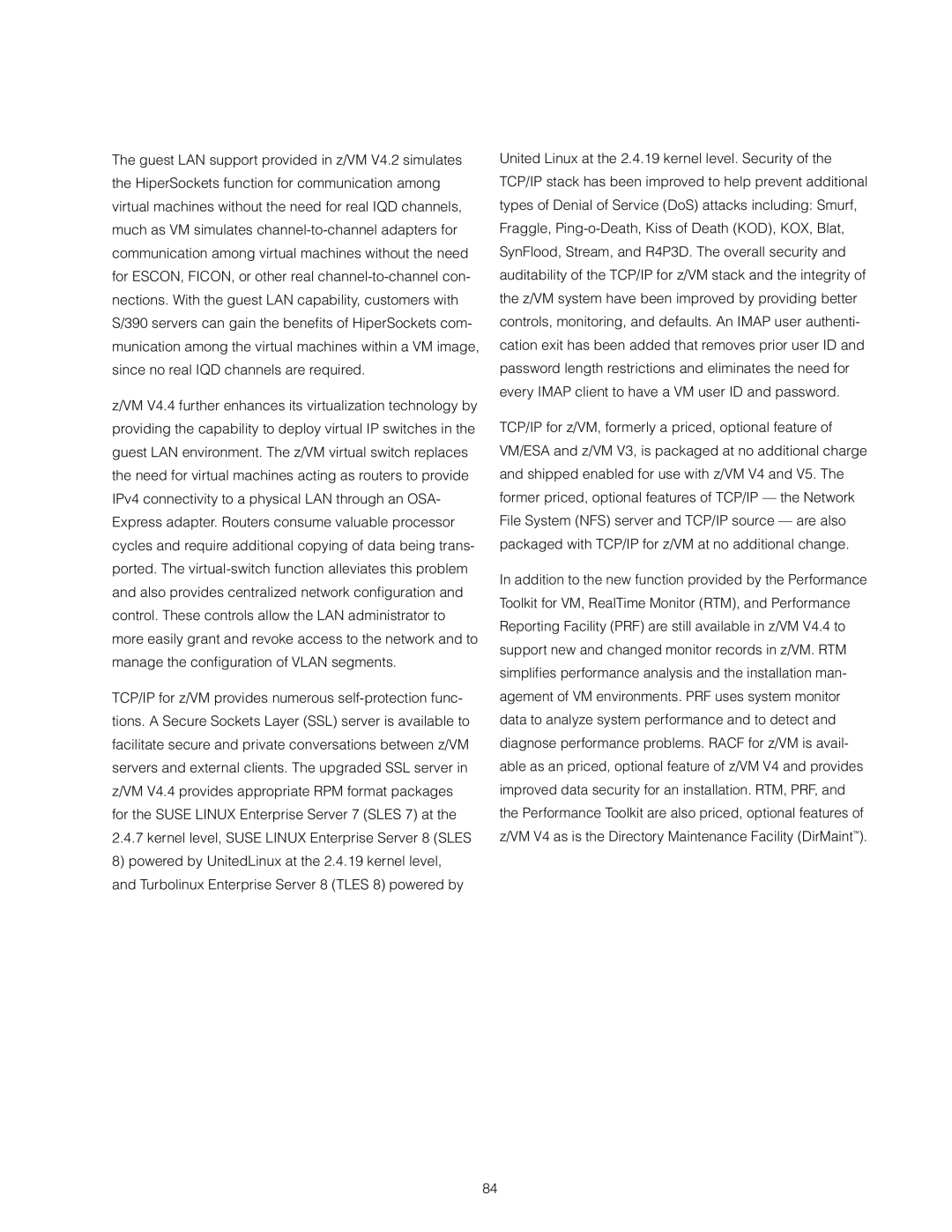The guest LAN support provided in z/VM V4.2 simulates the HiperSockets function for communication among virtual machines without the need for real IQD channels, much as VM simulates
z/VM V4.4 further enhances its virtualization technology by providing the capability to deploy virtual IP switches in the guest LAN environment. The z/VM virtual switch replaces the need for virtual machines acting as routers to provide IPv4 connectivity to a physical LAN through an OSA- Express adapter. Routers consume valuable processor cycles and require additional copying of data being trans- ported. The
TCP/IP for z/VM provides numerous
2.4.7kernel level, SUSE LINUX Enterprise Server 8 (SLES 8) powered by UnitedLinux at the 2.4.19 kernel level, and Turbolinux Enterprise Server 8 (TLES 8) powered by
United Linux at the 2.4.19 kernel level. Security of the TCP/IP stack has been improved to help prevent additional types of Denial of Service (DoS) attacks including: Smurf, Fraggle,
TCP/IP for z/VM, formerly a priced, optional feature of VM/ESA and z/VM V3, is packaged at no additional charge and shipped enabled for use with z/VM V4 and V5. The former priced, optional features of TCP/IP — the Network File System (NFS) server and TCP/IP source — are also packaged with TCP/IP for z/VM at no additional change.
In addition to the new function provided by the Performance Toolkit for VM, RealTime Monitor (RTM), and Performance Reporting Facility (PRF) are still available in z/VM V4.4 to support new and changed monitor records in z/VM. RTM simplifi es performance analysis and the installation man- agement of VM environments. PRF uses system monitor data to analyze system performance and to detect and diagnose performance problems. RACF for z/VM is avail- able as an priced, optional feature of z/VM V4 and provides improved data security for an installation. RTM, PRF, and the Performance Toolkit are also priced, optional features of z/VM V4 as is the Directory Maintenance Facility (DirMaint™).
84
